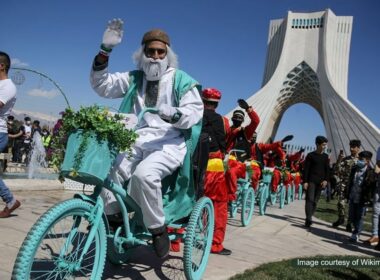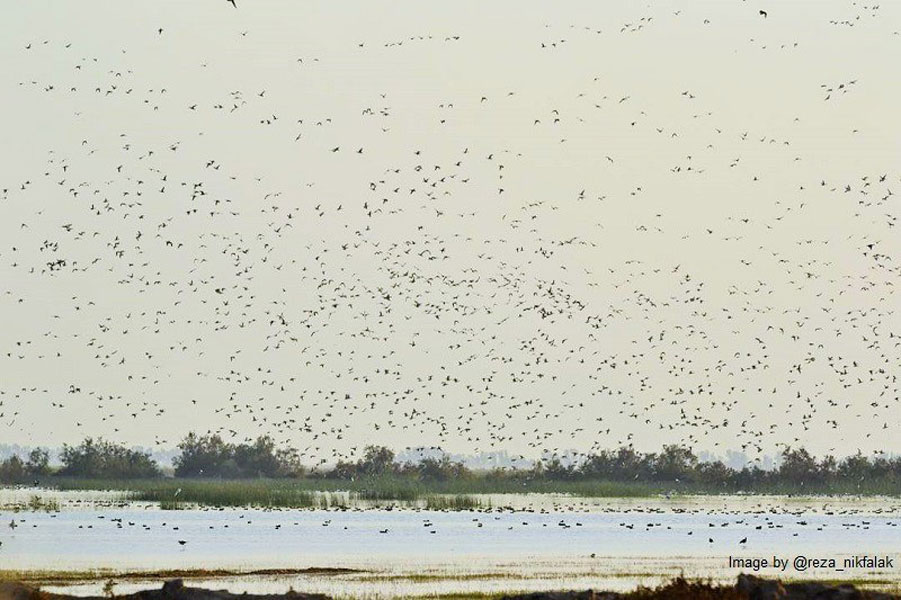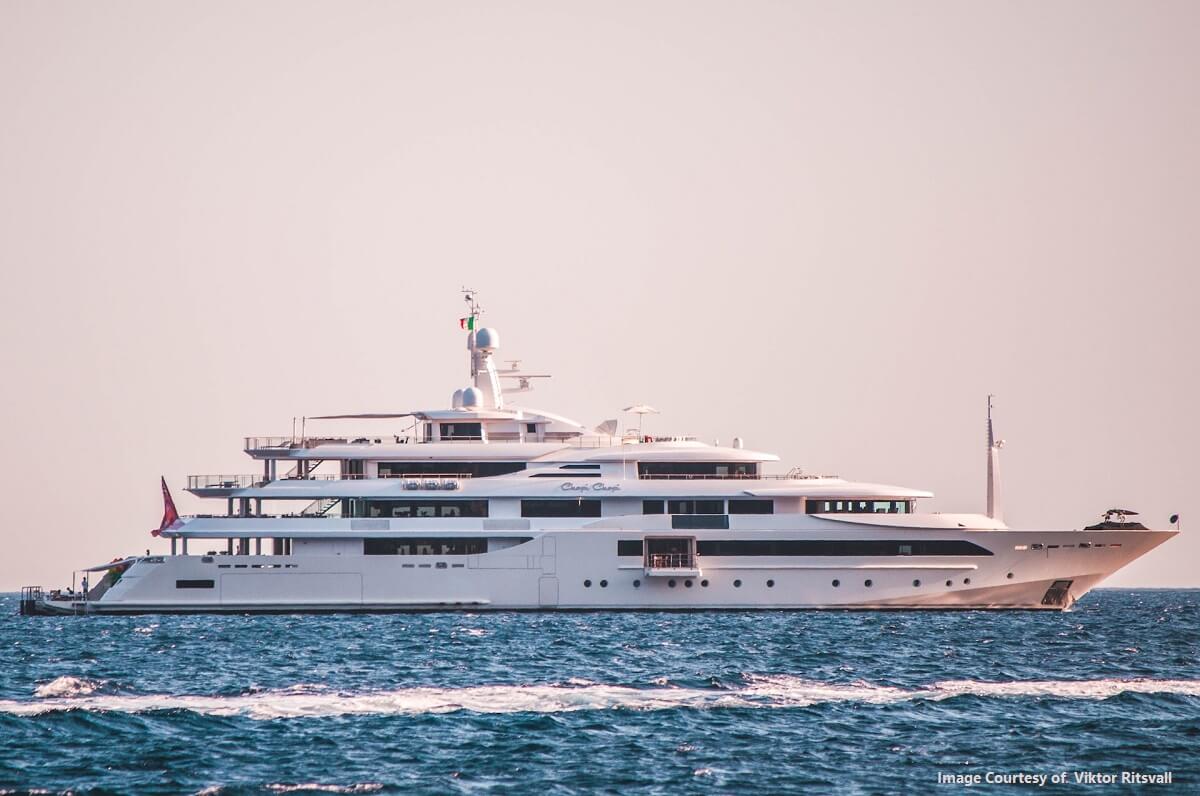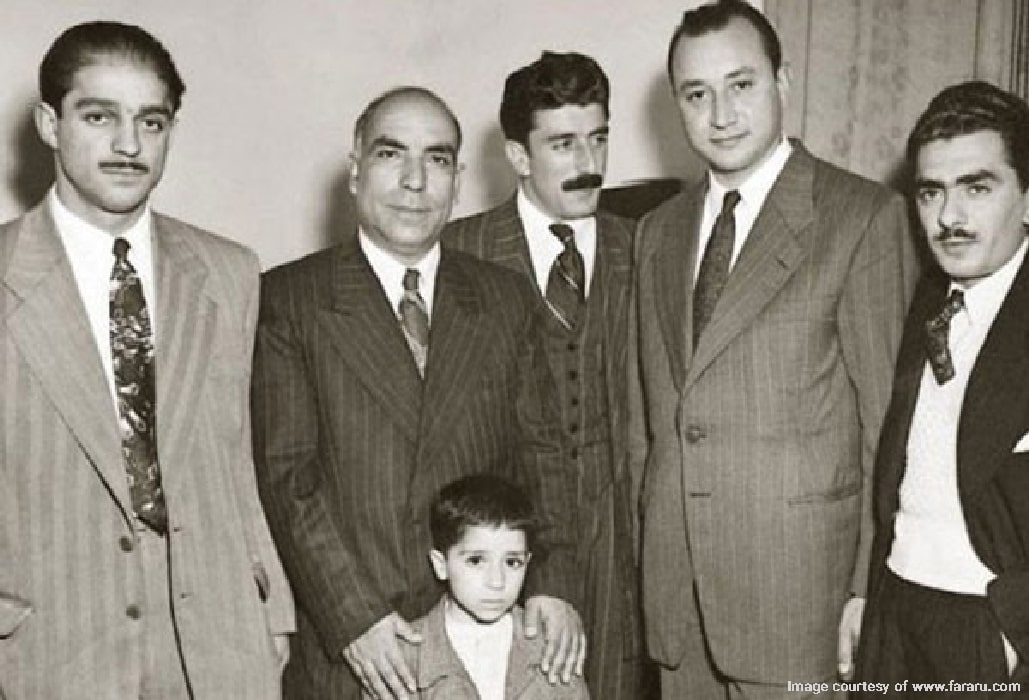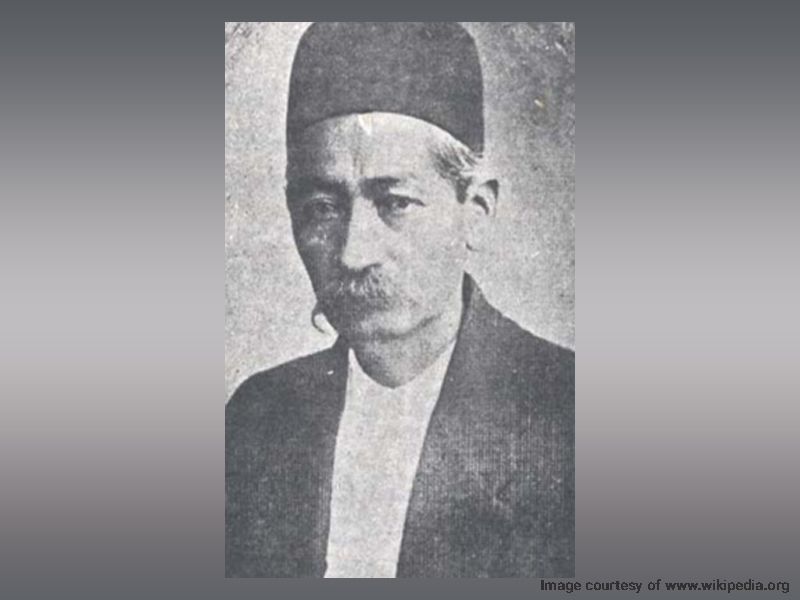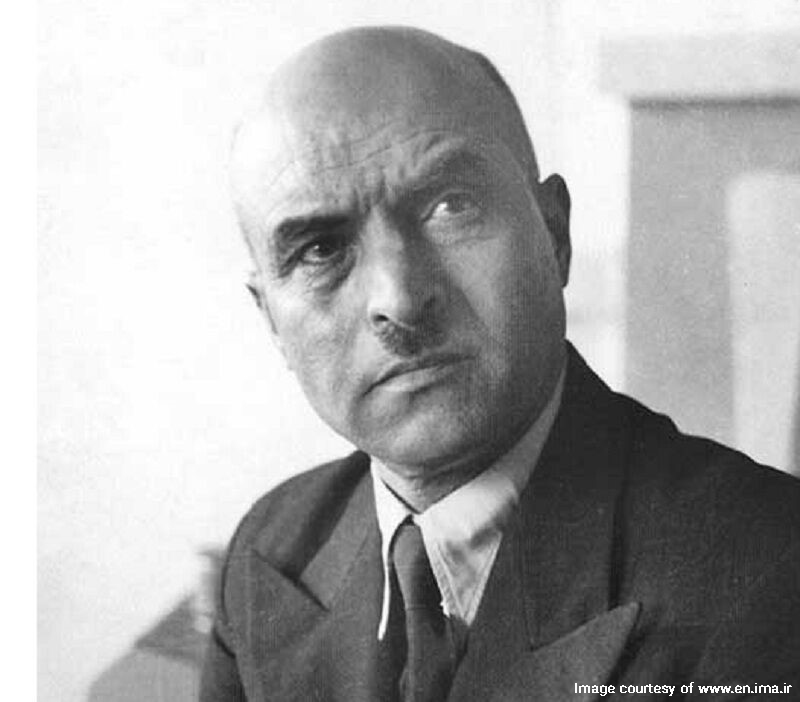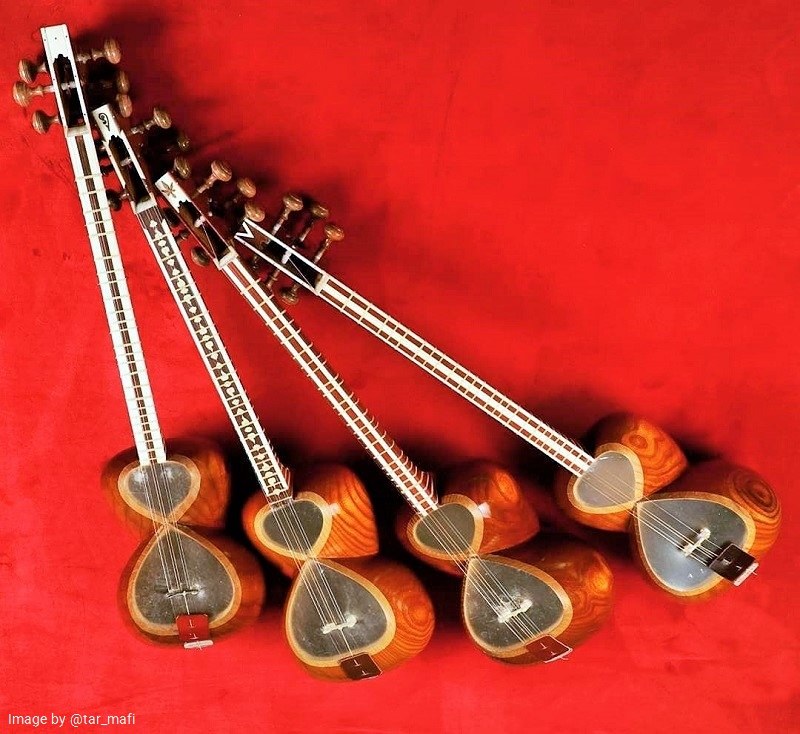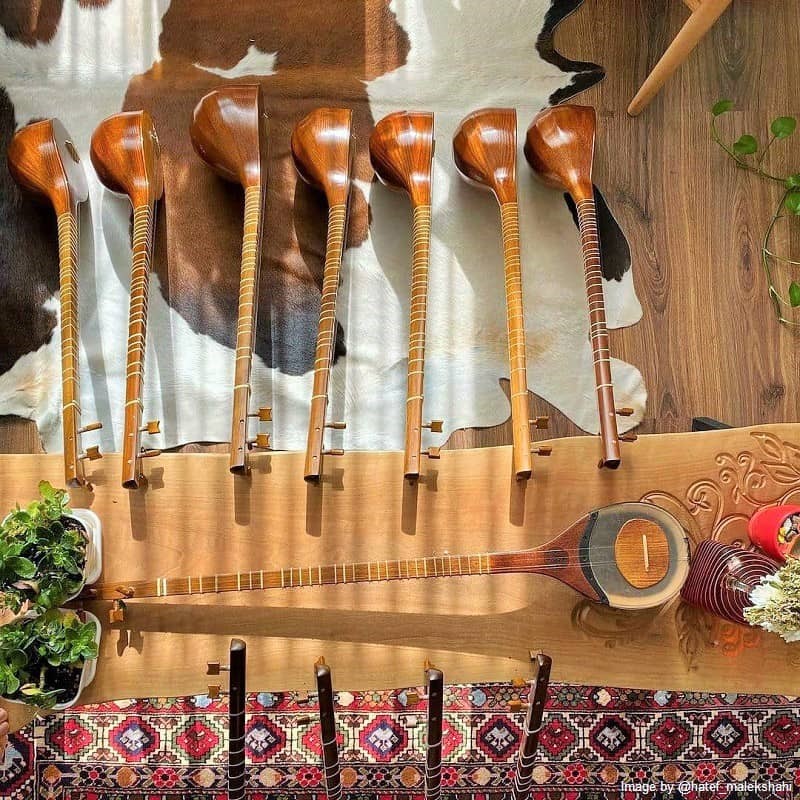
Setar is a Persian stringed instrument played with the fingertips of the right hand. Its tune is soft and melancholic. Generally, the people of West Asia play this instrument. Some musicians, including mystics, call this instrument “Avtar”. In the Farsi language, Setar means an instrument with three strings.
Setar is one of the musical instruments in the Tanbur family, but now this instrument is considered more similar to Tar. Most Tar players are also adept at playing Setar. This stringed instrument is made of wood (usually walnut and mulberry).
The History of Making and Playing Setar in Iran
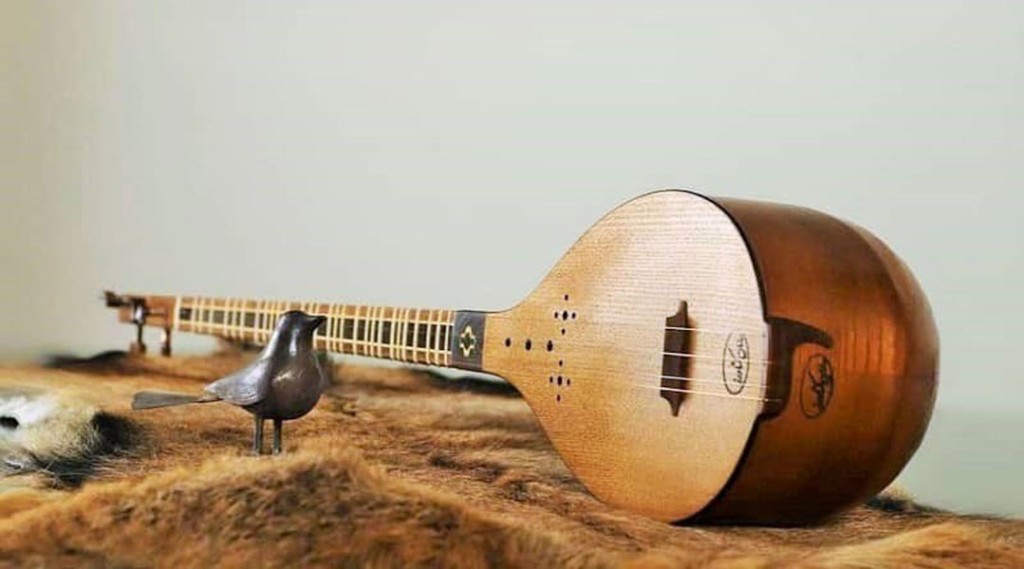
The early examples of this instrument date back to the 1800s. There is evidence of the existence of an instrument from the Setar family on pottery discovered in Shush. It is estimated to originate in 2000 BC. One of the oldest examples of this instrument is Naseruddin Shah’s Setar.
During the time of Āghā Ali-Akbar Farāhāni and his sons, which was the end of the Qajar period, the musicians played Iranian Radif (a collection of traditional music preserved by generations of musicians) with Setar similar to the Tar. Since then, this instrument continued to develop and prosper, and today, like the Tar, it has earned its status in traditional Iranian music.
This stringed instrument is one of Iran’s national musical instruments. it does not belong to any particular ethnic group or region. So, it isn’t specific to any location. Musicians play this instrument with a Mezrab (plectrum) to preserve the strings.
With its unique features, Setar has always fascinated art enthusiasts, poets, lovers, Sufis, and mystics. The latter groups play Setar during their mystic ceremonies.
Skills of Setar Playing in Iran
To play the Setar, the player sits on the floor or on a chair. Placing the bowl on their right thigh with an incline, at a 45 degrees’ angle. The fingers of the left hand are dragged on the main frets (wrapped along the handle of the Setar) while the right hand plucks the strings.
Musicians often use the index finger, middle finger and ring finger, and in some cases the little finger of the left hand. However, Some Setar masters also use their thumb on the frets. When playing the Setar, you can make the sound a little gruffer by using the Mezrab to pluck near the bridge.
Making a Setar
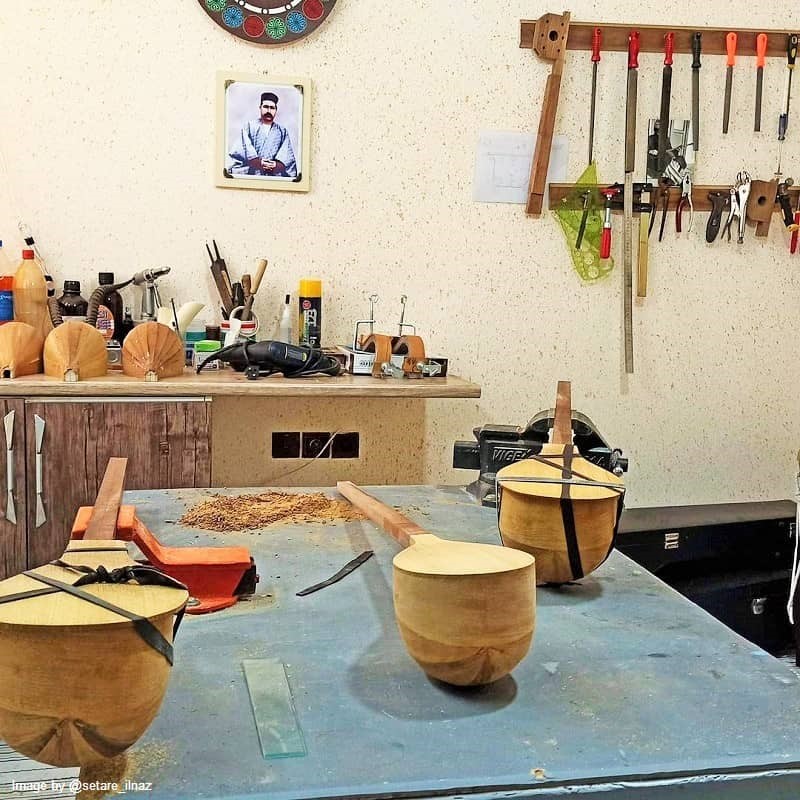
In Setar making, the craftsman shapes the body out of wood (usually walnut, mulberry, and maple). The Safhe (board) is made of mulberry wood, the neck is made of walnut, and the strings are made from metal (bronze and steel). Bones are utilized in decorating the neck, the nut, and the string holder.
Setar has two main parts: the bowl and the neck. The bridge is below the Safhe and the string holder is located at the bottom of the bowl, so if the instrument is placed on the ground, the string holder will be in contact with the ground. At the end of the neck, there is a peg head, which is where the peg is inserted (the pegs are used to tune the instrument). Unlike the tar, Setar does not have a peg box and the pegs are placed on the peg head (headstock).
Components of Setar
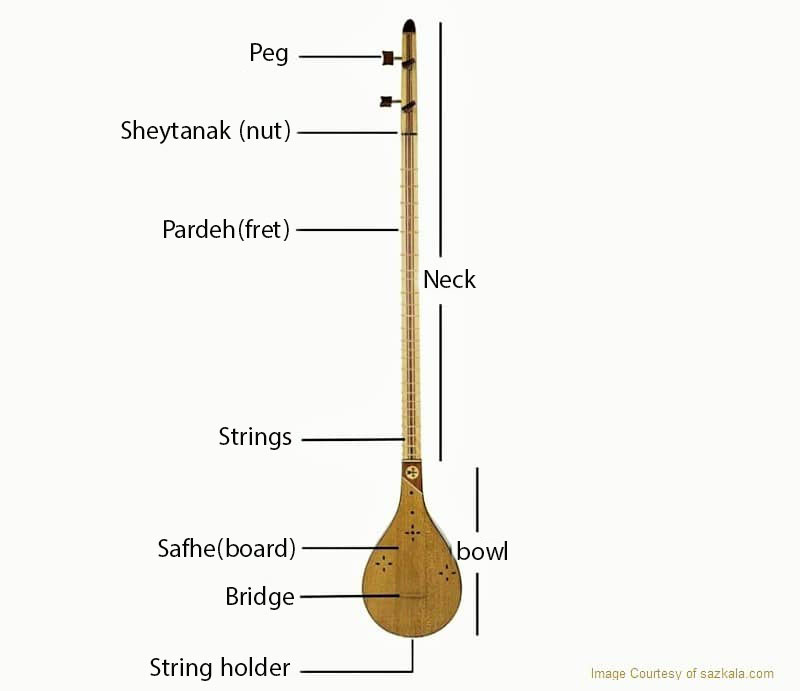
Here, we introduce the different parts of this Iranian stringed instrument:
- Resonance box (bowl): This is a part of the instrument’s bowl, usually made of mulberry wood.
- Neck: made of walnut wood and contains the frets.
- Safhe(board): The thin mulberry board covers the resonance box and the bridge is placed on it (the main factor in forming the Setar sound is the Safhe).
- Sound holes: Setar makers carve these holes to adjust the tone of the instrument.
- Peg head (headstock): It is part of the neck that holds the instrument pegs.
- Peg: This part holds the strings. Musicians tune the instrument by turning these pegs. They are usually made of walnut wood.
- Pardeh(fret): Often made from sheep intestines. Setar makers roll the Pardeh over the handle to adjust the note markers on the frets.
- Bridge: It is made of wood; the strings are strung through it.
- Sheytanak (nut): Made out of bone, the strings are strung through it.
- String holder: Setar makers place it on the bottom of the resonance bowl. It holds the strings. It is made from ram horn, forest boxwood or areca palm.
- String: Setar has four metal strings that resonate when tapped with fingertips or nails.
- Side frets: They are placed on the neck side; they are used to tie the Pardeh.
Sim Mushtaq (Mushtaq’s string)
Despite its name, which suggests there are three strings, the modern Setar has four strings. Originally, the instrument had three strings in the past, which is why it’s called Setar. Later, a mystic called Mushtaq Ali Shah added another string between the second and third strings. That’s why now Setar has four strings. This string is known as Wakhan or Mushtaq.
The Most Famous Iranian Setar Musicians
There are several renowned Setar musicians in the history of Persian music. We will introduce some of the most famous ones below:
Classic Musicians of the Iranian Setar
Here’s a list of some classic musicians who are famous for playing Setar in Iran:
Mirza Abdullah, Darvish Khan, Abdolhasan Saba, Noor Ali Boroumand, Arslan Dargahi, Yusef Forutan, Sa’id Hormozi, Dariush Safvat, Ahmad Ebadi, Parviz Meshkatian, Dariush Talai, and Mohammad Reza Lotfi.
Contemporary Musicians of the Three-String Instrument
The contemporary musicians are also known for their skill in playing Setar in Iran:
Kayhan Kalhor, Hossein Alizadeh, Majid Derakhshani, Mohsen Namjoo, Behdad Babaei, Behrad Tavakoli, and Keivan Saket.



